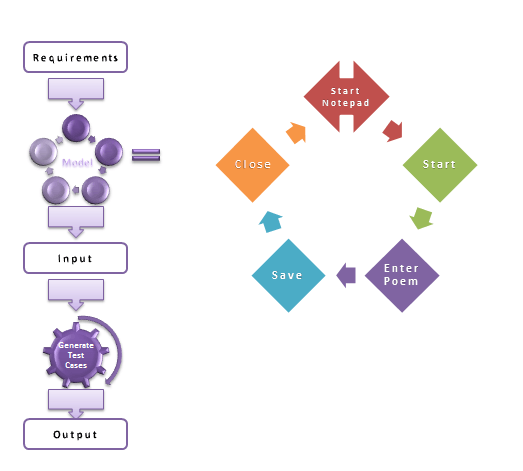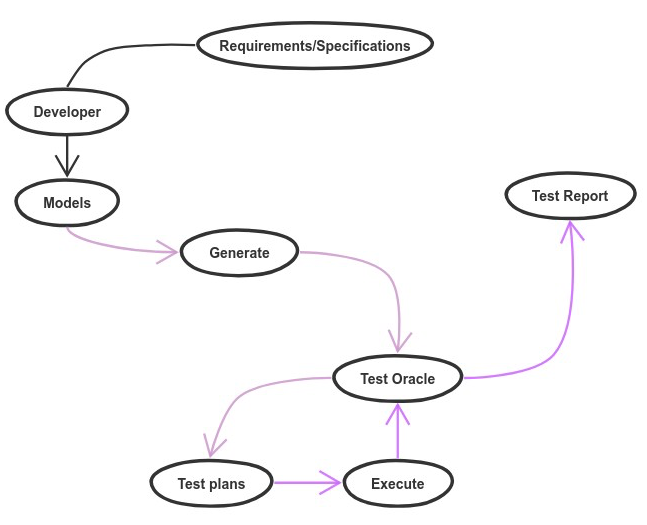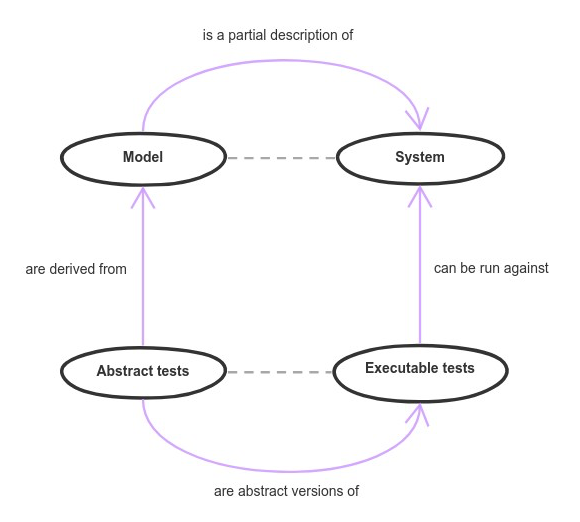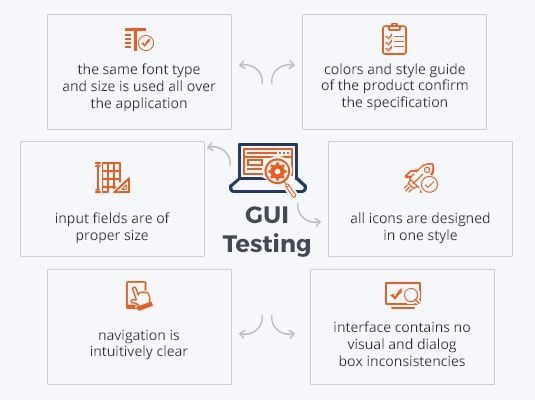Unit testing is not enough – so let's start using model-based testing to improve our workflows.
Software testing is an important phase in building a scalable software system that usually has critical functions, business flows/logic, and connected external entities. This distributed nature of software systems induces a certain level of complexity when writing tests for each unit, function, or flow.
There are various types of testing approaches you can use. The best approach you can employ seamlessly is model-based testing. In simple terms, this means creating a model of your system (more like a digital twin that describes every aspect of the system) and generating a test against the model.
What Is Model-Based Testing?

First, we need to know that a model is basically the description and representation of how we expect the system to work. The system’s processes can be defined based on the series of input sequences, actions, functions, output, and flow of data starting from input to the output received.
We must be able to determine all these behaviors while testing, and a model helps us do just that seamlessly. With that, we can then generate tests automatically based on the system models.
Basically, model-based testing is a software testing technique in which the test cases are generated from a model that describes the functional aspects of the system under test. This is a new software testing method that employs a secondary, lightweight, time-efficient implementation of a software build which is called a model.
We take this model coupled with the system requirements and generate efficient test cases. This software testing method is applicable to both hardware and software testing.
Why and How It Improves Workflow
Automating tests is unavoidable as it enables faster and more efficient software testing. You can streamline your workflow and use the latest development methodologies to improve it.
Most software developers and teams find it challenging to create and update test cases in an environment of constantly changing dependencies and requirements.
From employing the simplest functional tests to heavyweight methods like E2E, there have been numerous testing methods designed for improving testing reliability and effectiveness.
There’s absolutely nothing wrong with these methods. However, these test cases have to be written manually for each scenario. Whenever there’s a change in the system requirements, you have to update each test case affected by the change.
Below, you’ll find a graphical exemplification of the model-based testing process:

These models are used to generate automated test cases using MBT tools as they describe the expected behaviour of the system being tested.
We basically have two steps here:
- Creating models to describe the behavior and processes of the system.
- Using MBT tools like Spec Explorer, Graphwalker, fMBT or Modbat, to interpret the models and generate test scripts for automated testing.

When working with model-based testing, the model creation phase should be part of the software development life cycle and integrated as part of product design from the phase of requirements specification.
This allows the software development team to focus their attention on building a testable product and models that enhance user experience.
Model-based testing can improve our workflow by:
- Reducing the time spent on writing tests and allowing developers to focus on writing models to cover system requirements only and build a testable application from the onset.
- Reducing test suite maintenance and generating more tests.
- Helping the team create automated scripts and increasing test coverage when used with testing tools and automation frameworks.
How to Implement Model-Based Testing
Implementing model-based testing can’t be introduced suddenly to a system, as it has to be done gradually. It will be too much to introduce it to the entire system’s processes and operations.
It’s best fitted for the initial stage of the product, as things are still very minute. It's easy to integrate with the system requirements then, because as things get bigger you get to update just the model.
To implement model-based testing you have to start with creating the models. Models can can cover any level of requirements, from business logic to user story, and can be connected to each other.

Then you can automatically generate test cases based on the models once they are done creating it. And of course, if you make any changes to the models, the tests will be updated automatically.
You can easily integrate these tests into your CI processes and tools once you’re able to generate automated tests from models.
Advantages of Model-Based Testing
- Optimizes the software testing time and cost
- You can generate test scripts for each scenario with just a push of a button.
- This ensures the software testing team can communicate expected system behavior.
- Enables early detection of requirement irregularities.
- Automated test case generation and execution make the overall testing solution more efficient and less error-prone.
- It helps generate a minimal number of test cases to validate a given functional or data flow to ensure that the system under test works flawlessly and never does anything undesirable.
- Project maintenance is minute.
Disadvantages of Model-Based Testing
- Demands a high amount of investment as well as effort.
- Requires skilled and disciplined software tester.
- The first test case takes longer to generate as it requires more advance work than traditional manual testing.
- The learning curve of model-based testing is pretty steep and its complexity makes it harder to understand for beginners.
How it's Different from UI Testing
Basically we know what model-based testing is now, and we already figured out the benefits of using it over using the traditional testing method.
UI (User Interface/Frontend Testing) is a type of software testing that simply involves the process of testing the function of the user interface, making sure the interface of the system is reacting as it’s supposed to.

This process involves manual testing, and each test scenario has to be written by hand. Any changes made to the UI will break the whole test case unless it's updated along with the changes. It employs the use of WebDrivers and most times Selenium in order to fully simulate the way users interact with the interface and validate the expected output.
UI testing can be employed in any stage of the product as it clearly doesn’t have much requirement and the learning curve is very easy compared to MBT.
The cost of testing is quite low and could be ground down to zero. The time spent can also be little. Maintenance can be very high depending on the complexity of the product interface.
It doesn’t require a very skillful developer or software. Any developer with basic testing knowledge can pick this up. There are so many differences when you look into this more, however, both are good for different use cases.
Conclusion
Model-based testing is a powerful, cost-efficient, and profitable technique for large businesses in the long run.
However, introducing this approach to large company processes can be a big challenge, especially when it involves overhauling their entire approach to software development and testing.
Model-based testing has to become a part of the development workflow, but this comes with its own challenges, including changes to the entire infrastructure. It also makes an already steep learning curve even more challenging.
Luckily, there are some things that can help identify when model-based testing can really be useful. For example, if you have an infinite set of systems with requirements you can cover in different ways. Or if you have a distributed or reactive system, that can also be a reason to consider this approach.
Model-based testing can go a long way in testing and save significant time and effort when implemented properly.

